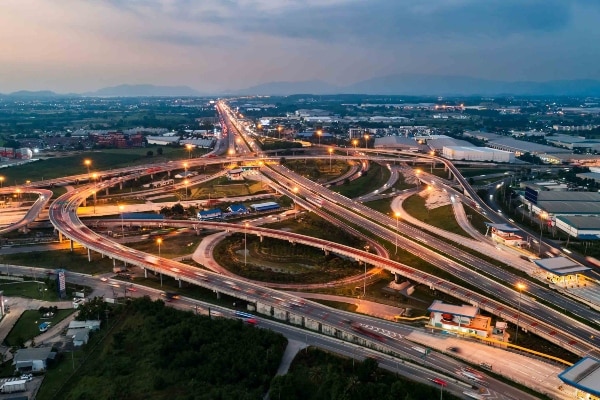-
Featured services
2026 Global AI Report: A Playbook for AI Leaders
Why AI strategy is your business strategy: The acceleration toward an AI-native state. Explore executive insights from AI leaders.
Access the playbook -
Services
Alle Services und Produkte anzeigenNutzen Sie unsere Fähigkeiten, um die Transformation Ihres Unternehmens zu beschleunigen.
-
Services
Network-Services
Beliebte Produkte
-
Services
Cloud
Beliebte Produkte
-
Services
Consulting
-
Edge as a Service
-
Services
Data und Artificial Intelligence
- KI und intelligente Lösungen
- Daten-/KI-Strategie und -Programm
- Data Engineering und Plattformen
- Daten-Governance und -management
- Datenvisualisierung und Entscheidungsfindung
- $name
- GenAI Platforms
- GenAI Industry Services
- GenAI Infrastructure Services
- GenAI Value Transformation
- Data und Artificial Intelligence
-
-
Services
Global Data Centers
-
Beliebte Produkte
-
Services
Application Services
-
Services
Sustainability Services
-
Services
Digital Workplace
-
Services
Business Process Services
-
Services
Generative AI
-
Services
Cybersecurity
-
Services
Enterprise Application Platforms
![]()
IDC MarketScape: Anbieterbewertung für Rechenzentrumsservices weltweit 2023
Wir glauben, dass Marktführer zu sein eine weitere Bestätigung unseres umfassenden Angebotes im Bereich Rechenzentren ist.
Holen Sie sich den IDC MarketScape -
-
Erkenntnisse
Einblicke und RessourcenErfahren Sie, wie die Technologie Unternehmen, die Industrie und die Gesellschaft prägt.
-
Erkenntnisse
Ausgewählte Einblicke
-
Die Zukunft des Networking
-
Using the cloud to cut costs needs the right approach
When organizations focus on transformation, a move to the cloud can deliver cost savings – but they often need expert advice to help them along their journey
-
So funktioniert Zero-Trust-Sicherheit für Ihr Unternehmen
Sorgen Sie dafür, dass Zero-Trust-Sicherheit für Ihr Unternehmen in hybriden Arbeitsumgebungen funktioniert.
-
-
Erkenntnisse
![]()
Copilot für Microsoft 365
Jeder kann mit einem leistungsstarken KI-Tool für die tägliche Arbeit intelligenter arbeiten.
Copilot noch heute entdecken -
-
Lösungen
Alle LösungenWir helfen Ihnen dabei, den Anforderungen an kontinuierliche Innovation und Transformation gerecht zu werden
Global Employee Experience Trends Report
Excel in EX mit Forschung basierend auf Interviews mit über 1.400 Entscheidungsträger:innen auf der ganzen Welt.
Besorgen Sie sich den EX-Report -
Erfahren Sie, wie wir Ihre Geschäftstransformation beschleunigen können
-
Über uns
Neueste Kundenberichte
-
Liantis
Im Laufe der Zeit hatte Liantis, ein etabliertes HR-Unternehmen in Belgien, Dateninseln und isolierte Lösungen als Teil seines Legacysystems aufgebaut.
-
Randstad
We ensured that Randstad’s migration to Genesys Cloud CX had no impact on availability, ensuring an exceptional user experience for clients and talent.
-
-
![Heineken Landing Page]()
NTT DATA und HEINEKEN
HEINEKEN revolutioniert die Mitarbeitererfahrung und die Zusammenarbeit mit einem hybriden Arbeitsplatzmodell.
Lesen Sie die Geschichte von HEINEKEN -
- Karriere
Topics in this article
Your network is the central nervous system of your business. It connects your infrastructure, applications, data, employees and customers; without it, you cannot innovate, compete or grow. Yet, many networks are falling behind in the quest for digital transformation. Legacy architectures, built for the centralized IT operations of the past, have now become little more than bottlenecks.
Forward-thinking organizations are moving beyond basic connectivity and embracing a new paradigm: an intelligent, agile and autonomous network. This is NTT DATA’s vision for the “Network of the Future” — a self-managing infrastructure that anticipates your business needs.
Your network is slowing you down
The pressure on enterprise networks has reached a tipping point, driven by four unstoppable forces that are impossible to ignore.
1. The shift to edge computing
In decentralized IT environments, data is no longer confined to data centers. In 2025, 75% of enterprise-generated data will be created outside traditional centralized data centers or the cloud (including at the edge). This shift has shattered the traditional perimeter, scattering applications and data across clouds and edge locations. Legacy networks cannot keep up, causing traffic bottlenecks and degraded user experiences.
2. The rise of AI
AI is driving a surge in data and computing demand. Apart from moving packets, networks are now also expected to interpret and prioritize dynamic, AI-generated workloads. Yet, 90% of organizations cite legacy infrastructure as a barrier to deploying GenAI.
3. Evolving security threats
The newly distributed nature of IT and the evolution of AI have expanded the attack surface, and legacy security models are increasingly insufficient. In 2024, 77% of organizations experienced breaches in their AI systems, and 89% of the C-suite were concerned about security risks associated with GenAI deployments. Still, only 24% of CISOs strongly agree that their organization follows a robust framework that balances risk with value creation, according to research for our Global GenAI Report.
What is needed is a resilient, zero trust architecture that embeds security throughout the AI lifecycle — from data governance to real-time threat response.
- ALSO READ → 5 steps to secure your network from within
4. High demand for seamless experiences
Whether it’s an employee on a video call or a customer accessing a service, expectations are high: fast, reliable connectivity, anytime and anywhere. Networks that rely on manual processes and rigid configurations can’t deliver; they are undermining organizations’ agility and competitiveness.
The old model of enterprise networking has failed. The network must now be intelligent, adaptive and built for a world where data, users and threats are everywhere.
What makes a network truly future-ready?
At NTT DATA, we see the network as a strategic enabler — intelligently designed and dynamically managed to support enterprise transformation. It needs to be a living, cognitive system that adapts in real time to changing business needs.
This next-generation network is anchored in four core characteristics:
1. It spots trouble before it hits
The network of the future is hyperaware, moving from reactive monitoring to proactive intelligence. Using advanced telemetry and AIOps, it gathers deep, contextual insights into its own health and performance.
- Proactive sensing and real-time analysis: It continuously ingests data from devices, applications and user connections, detecting subtle anomalies — such as latency spikes, unusual traffic or abnormal device behavior — that may signal potential issues. While analyzing these anomalies in real time, it can distinguish between a marketing-driven traffic surge and a distributed denial-of-service attack.
- Instantaneous adaptation: When disruptions occur, the network responds instantly to reroute traffic, allocate bandwidth or isolate compromised endpoints — automatically and without human input.
2. It anticipates demand and scales with precision
A strategically aligned network does not just react to the present but also anticipates the future. Using predictive analytics and machine learning, it helps organizations to move from a reactive posture to a forward-looking one where resources are always aligned with business demand.
- Anticipating demand shifts: The network learns business rhythms and forecasts bandwidth needs for seasonal peaks, application rollouts or hybrid workforce demands. This enables smarter capacity planning and avoids overprovisioning or underprovisioning.
- Self-optimization and limitless scale: It continuously fine-tunes network performance by adjusting quality-of-service policies and scaling across hybrid and multicloud environments based on software-defined wide area network (SD-WAN) and cloud-native principles. As the organization grows, the network scales smoothly, without architectural constraints.
3. It’s built to think — AI, automation and digital twins power the core
The network of the future integrates transformative technologies to deliver agility, intelligence and security:
- AI and hyperautomation: AI handles complex root-cause analysis in seconds. Hyperautomation manages everything from zero-touch provisioning to automated security enforcement, freeing human teams to focus on higher-value work and innovation.
- Digital twins: Network changes are first tested and validated on a digital twin — a virtual replica of the entire infrastructure. This safely simulates the impact of software upgrades, responses to cyberattacks and the implementation of new architectures.
- Zero trust security: Abandoning the “castle and moat” model, the network now enforces “never trust, always verify.” Every user, device and application is authenticated through microsegmentation and identity-based policies, and threats are contained before they spread.
- Cloud-native and sustainable infrastructure: Built on software-defined, containerized and API-driven foundations, the network is agile and programmable. AI-powered energy management and energy-efficient hardware reduce the organization’s environmental impact, supporting environmental, social and governance goals.
4. It’s built in collaboration with experts, because the right partner changes everything
Building the network of the future requires deep AI, cybersecurity, cloud and networking expertise. Traditional “ping and wait” models are obsolete. Networks must now analyze vast telemetry and behavioral data in real time to deliver intelligent, adaptive experiences for every user and endpoint.
However, most organizations cannot achieve this internally. The answer is to partner with expert managed service providers that bring operational excellence and a co-innovation mindset. This is a shared commitment to network performance, security and digital transformation.
A strong partner turns the network into a strategic asset by managing complexity and ensuring 24x7 performance, freeing internal teams to focus on growth and innovation.
Ready to build your future-ready network? Here’s where to begin
The question isn’t if you should modernize your network, but how — incrementally, without disruption and at the right speed. Here’s your blueprint to get started:
1. Reframe the conversation from cost to value
Your network is more than an IT expense — it’s a value engine. Stop measuring it by uptime alone. Instead, assess its impact on key business performance indicators such as time to market, employee productivity, supply chain efficiency and customer satisfaction.
Your action: Lead a strategic review with your IT, finance and operations teams to align network performance with your business outcomes. Build a business case rooted in growth and competitive advantage, not just cost savings. A cost-first mindset stalls innovation and leads to millions in losses from misaligned network and business strategies.
An example to consider: When a global beverage giant set out to future-proof its operations, its leadership aimed to transform the network into a strategic growth engine. With NTT DATA’s help, they adopted a network-as-a-service model. The result: in-house teams with more capacity to focus on priorities; bottlers, supply chains and sales connected in real time; and an organization that is ready for AI-powered digital factories and outcome-driven operations.
2. Champion a platform-first, AIOps-driven strategy
Don’t let teams get bogged down managing a complex, multivendor web of hardware. The future is software-defined, with a unified platform offering a single pane of glass across your hybrid and multicloud estate. Powered by predictive analytics and AI, it shifts operations from reactive firefighting to proactive, automated optimization.
Your action: Draw up a clear plan for your organization to consolidate monitoring tools onto a scalable platform. It should safeguard performance, customer experience and business continuity while remaining flexible as your needs evolve.
Too many disconnected tools create blind spots, slow down response times and cause costly issues like outages, missed SLAs and lost customers. That’s why we built the AI-powered platform SPEKTRA, a unified solution offering real-time visibility, early detection, automated response and continuous optimization.
An example to consider: When a top global airline partnered with us, they used this platform to modernize their network and unify operations. They eliminated silos, boosted business performance and guaranteed on-time journeys for millions of passengers, all while aligning the network performance with their business goals.
3. Make zero trust security a business-wide mandate
In a world of distributed applications and remote work, zero trust is the only way to secure innovation at the edge and in the cloud.
Your action: Hold teams and partners accountable for maintaining a zero trust security posture across your organization. Embed continuous verification into your network strategy, aligning security with business goals and managing risk proactively. Without this shift, AI-enhanced threats will only grow. It’s why we help our clients close the gap with an AI-first, zero trust approach that combines identity and access control with threat intelligence.
An example to consider: A top global pharmaceutical company worked with NTT DATA to implement zero trust security across more than 300 sites. By migrating to a platform-driven architecture with real-time detection, automated response and continuous protection, they turned security into an enabler of resilience, trust and innovation.
4. Demand a partnership focused on co-innovation
Your network is too critical for traditional outsourcing. Instead, seek a strategic partner that takes full operational ownership while driving business value collaboratively. Their success should be measured by yours — with shared goals and transparent reporting.
Your action: Redefine your requests for managed service proposals. Shift from cost-reduction SLAs to business-outcome metrics, innovation commitments and a shared-risk model that keeps your partner invested in your growth. Without these, you risk being locked into a static model that holds back innovation.
An example to consider: When success is shared, collaboration becomes an engine for agility and growth. Working with a leading healthcare company, we developed a real-time inventory management solution using our Spektra Edge appliance with its industry-specific IoT and edge capabilities. It helps clinics and hospitals track inventory, predict demand and forecast capacity, boosting patient outcomes and positioning NTT DATA as a catalyst for transformation.
Take the first step toward a future-ready network
The goal is clear: Build a network that’s intelligent, secure and aligned with your strategic goals. Start by scheduling a complimentary Network Assessment with NTT DATA. We’ll benchmark your current capabilities, identify gaps and deliver a clear roadmap to align your network with business objectives.
The future will not wait. Act now to build a network that moves with your business, not against it.



